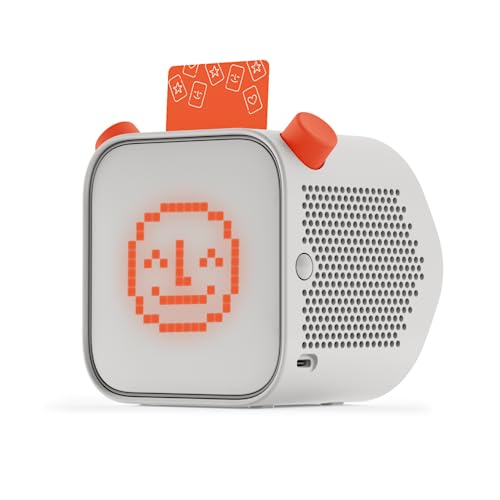Yoto audio player review - is it worth the money?
We tried and tested the Yoto 3rd generation audio player for kids to see if it's worth the price tag and how it compares to its mainstream competitor Tonie - here's how we got on
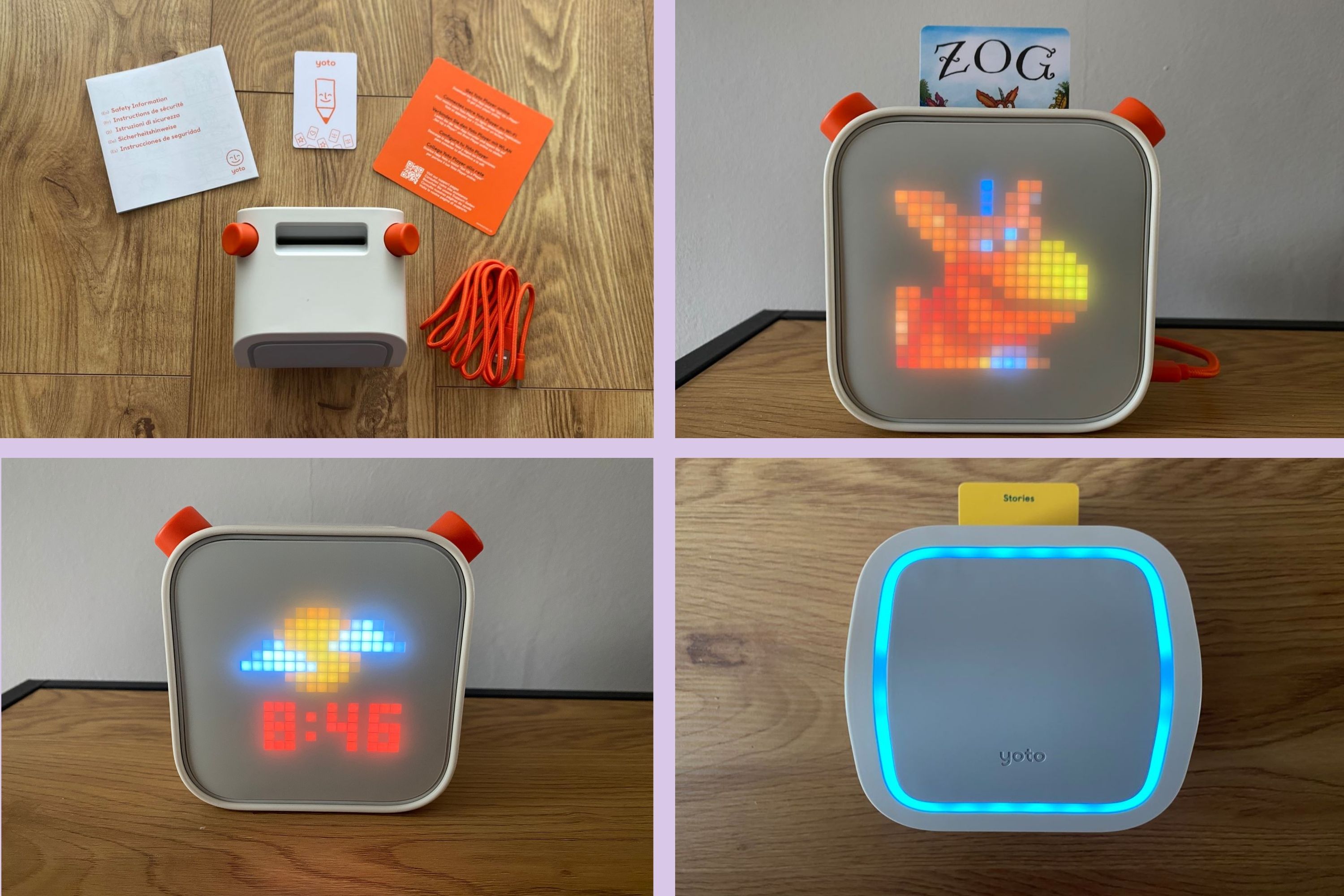
If you want an audio player that is jammed packed full of useful bonus features, then the Yoto is definitely worth considering. The optional nightlight is a really useful addition, especially when you can set different colours for different times of day - that means it doubles as an ok-to-wake light which is perfect if you're still trying to get sleep training nailed. The Yoto's retro design will keep in favour as your child grows, giving it longevity, and the display screen is both useful and engaging. My Goddaughters are six and nine, and both prefer the Yoto to mainstream competitor Tonie - they love the design, the display and how easy it is to organise their Yoto card collection.
-
+
Super easy to operate (especially for little fingers)
-
+
Nightlight feature is a great addition
-
+
Cards are really easy to store
-
+
Better battery life than a Toniebox
-
-
Need to turn the player over for bedtime, otherwise the display could be too stimulating
-
-
Not as tumble-proof as a Toniebox
-
-
You might not need all the extra functionality
Why you can trust GoodtoKnow.
We put the Yoto audio player (3rd generation) through its paces to see if it's worth the money, and how it stands up against other audio players out there.
If you have kids, you might already be familiar with the audio players available and even have picked a side in the Yoto vs Tonie debate. Similarly to the Toniebox (read our Toniebox review if you want to know more), the Yoto is an audio player that is designed to be operated by kids from the age of three, and encourages independent play and learning.
Stories are played via cards (about the size of a credit card), and it's got bags of extra features including a nightlight (which can double as an ok-to-wake alarm) and a room thermometer.
But with a price tag of £99.99 for the player alone - is it worth the money? Read our review to find out.
Setting up the Yoto Player
Setting up the Yoto player is really easy - it took me less than five minutes, which is very handy if you have a very eager child wanting to get the paws on it. You'll need to download the Yoto app (available on App Store and Google Play), and if you have that downloaded before you take the player out of the box, you'll be guided through the entire set up process.
You will need a plug (you get a USB charging cable in the box, but not the plug itself) and you need to connect your player to power before you start the set up process. For super fuss-free set up, it's helpful to have your WiFi password to hand too. As you're guided through the set up process, you're also asked to set up a family account (it's free) and you can add multiple players to your family account if you want. All you need is an email address and password. There is a subscription model that you can take advantage of - £9.99 per month and you can get two cards every month - but it's not a requirement in order to be able to use the player. You can buy cards individually or in sets as and when you need.
What do you get in the box?
In the recyclable box, you get the Yoto player, a charging cable and a welcome Yoto card. which can be used to point you in the right direction if you get stuck with the set-up.
Any cards or accessories, such as a protective 'adventure jacket', wireless charging dock or card case are sold separately.
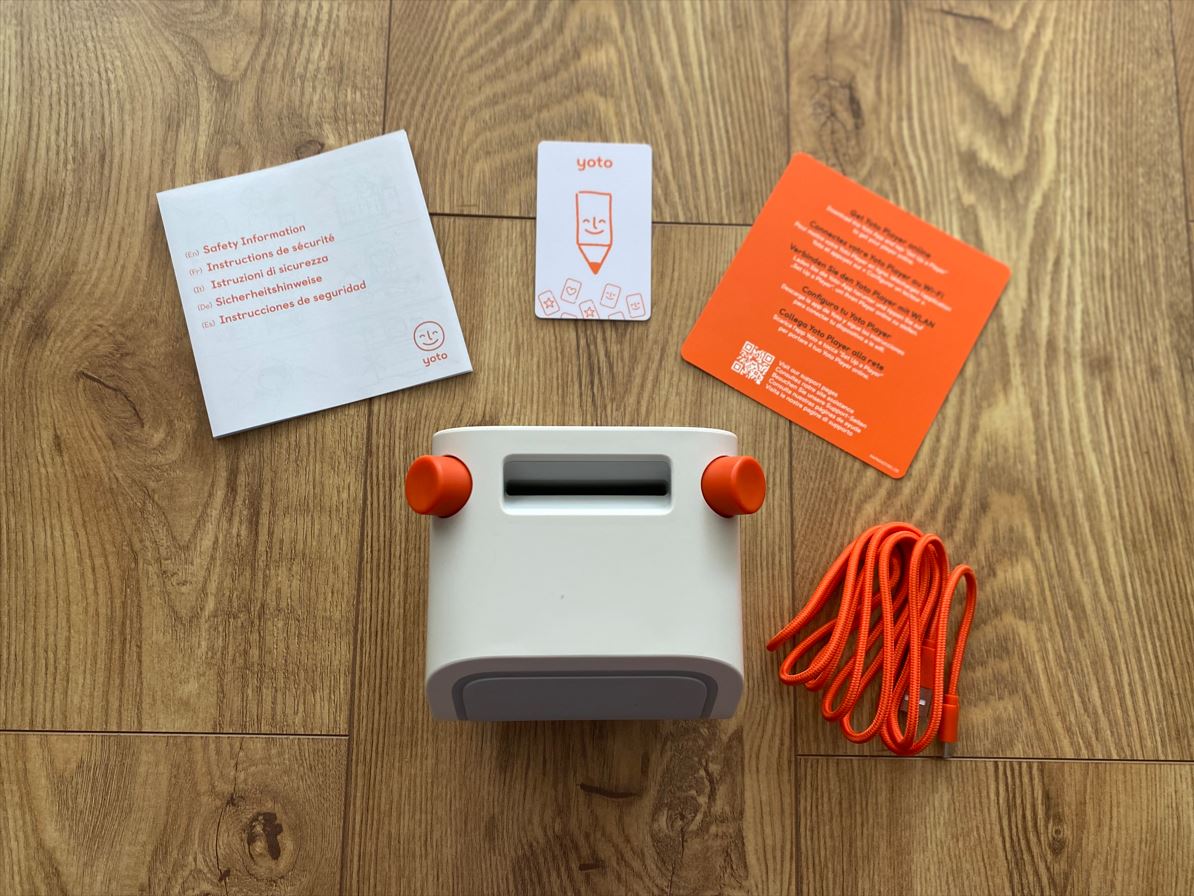
Yoto Player design
Although audio players of this nature are relatively new, the design of the Yoto feels quite retro - almost the shape of an old Apple Mac computer. It's simply designed, with the main body and two orange knobs to control volume and chapter skipping. It's really intuitive where and how you add the cards, and while you do have to hold the card vertically, it doesn't matter which way round you put it in - which makes it very kid-friendly. The sound is crisp and clear, even when you reach maximum volume levels (which isn't deafeningly loud, thank goodness).
The Yoto's grey and orange colourway is eye catching, but it's worth pointing out that the Yoto only comes in one colour, unlike the Toniebox, which is available in broader range of shades. But if you are keen for some customisation, then you do have a choice of 'adventure jackets' that you can buy for your Yoto (but this is an added cost). These are flexible silicone cases that you put over the Yoto to protect it from bumps and knocks - you can choose from orange, pink, blue or mint green. I like that you can buy this additional protection, but would have liked it to have been integrated into the main unit to protect it from enthusiastic and possibly clumsy fingers.
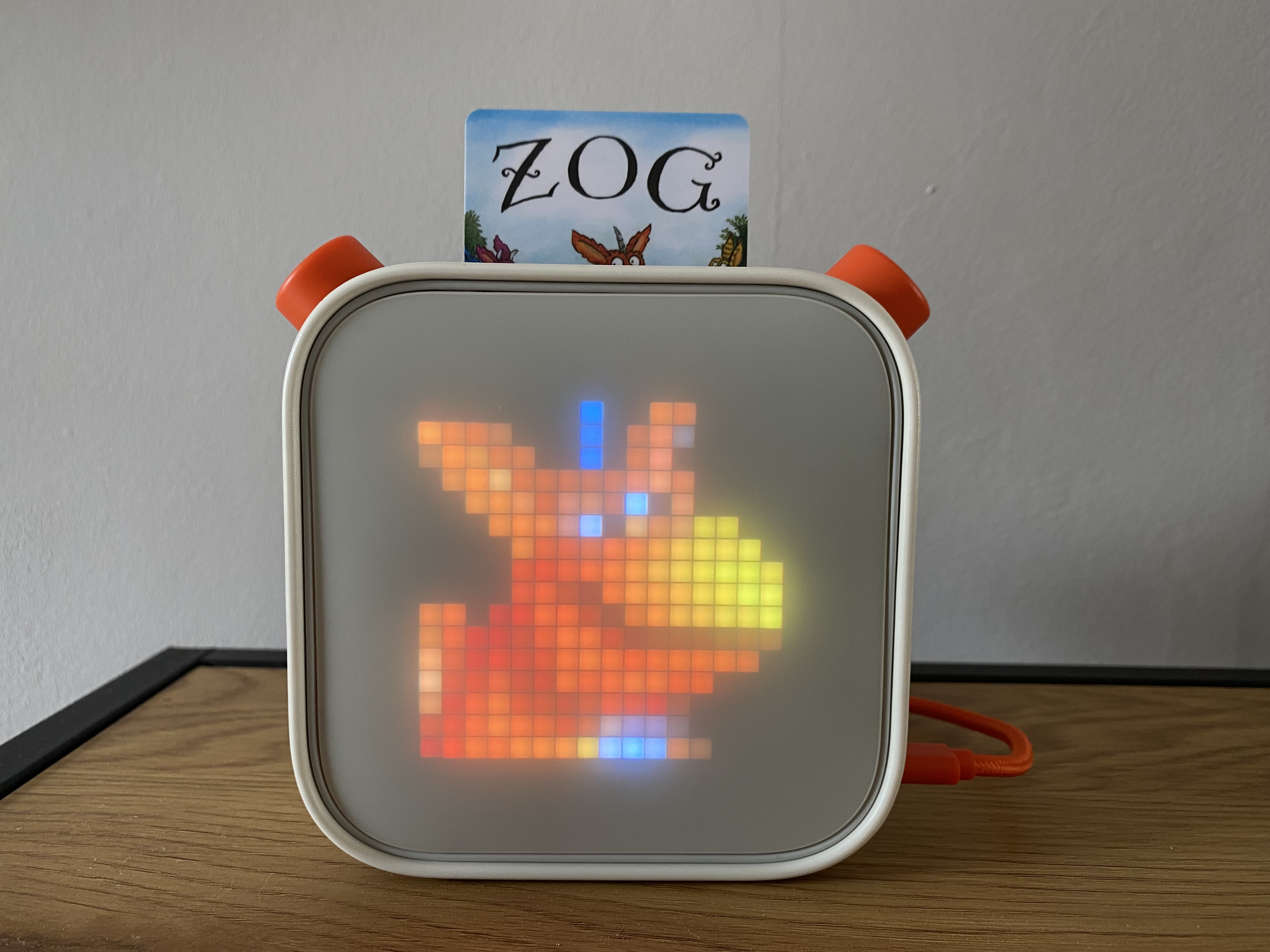
While it doesn't have a traditional screen so to speak - you can't watch anything on it - it does have a display that, when active, shows the time and a weather graphic, or a pixel drawing of a themed character when you pop a card in. This style of graphic adds to the retro feel. I was initially concerned that this would make the Yoto unsuitable for light sensitive children when it came to bedtime, but you can tip the player forward, lying it display side down, which hides the display from view, and also activated the nightlight function (if you want it). You can turn off the nightlight in the app settings if you don't want it. You can choose the colour of nightlight, and even set it to show one colour at night and another colour in the day - a really useful feature if you are trying to teach your tiny human to stay in bed until a particular time.
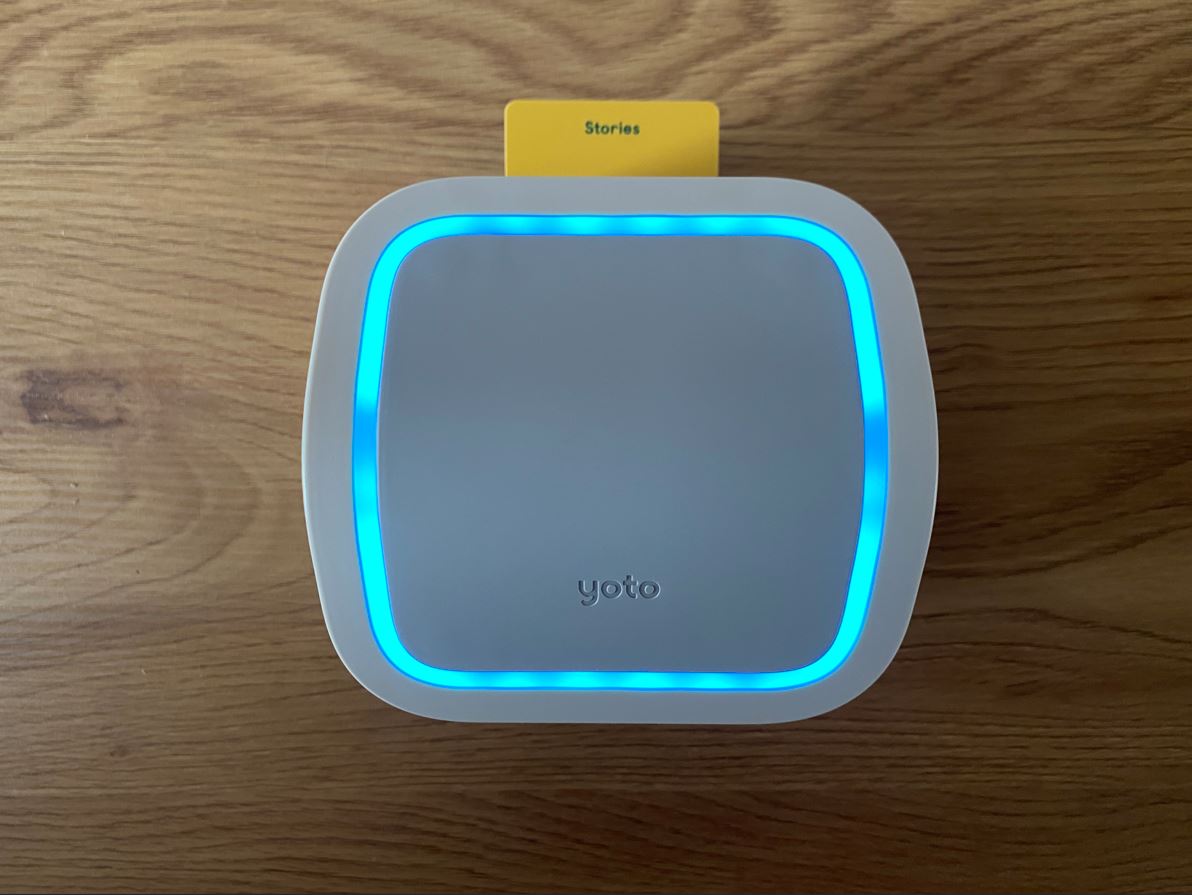
Yoto audio player nightlight
It also has an integrated room thermometer which allows the parent to gauge the temperature of room the Yoto is in via the app, without having to step inside. I can see this feature being particularly useful during clammier summer nights.
You can also use the app to set volume limits for both day and night usage so you can be sure no-one is keeping anyone awake into the wee hours.
What's the best age for a Yoto Player?
The Yoto is aimed at kids between three and 12 years old, but I can see it being particularly appealing to kids from the age of six and older, as the retro design feels it holds longer lasting appeal. My Goddaughters, who are aged six and nine, both prefer the Yoto to the Toniebox. They both thought the Toniebox was a bit young for them, and they love being able to organise their card collections. They each have a card case that holds up to 64 Yoto cards.
However, my four-year-old nephew prefers the Toniebox - he loves that it comes in his favourite colour, red, and adores exploring the textures of the the Tonie audio figures.
How easy is the Yoto to use?
After a super-simple set-up process the Yoto is really easy to use. To wake the Yoto, You simply press the power button on the side of the player, and you'll hear a little chime and see a smiley face appear on the display. Then it's ready for the cards. You can have the card facing in any direction, which means younger children can play their favourite stories without worrying about orienting the card in a particular way.
To stop playback, you simply take the card out or it'll turn off automatically when the story ends (and if there is no activity).
To adjust the volume, you just turn the left hand orange knob, and you'll see a colour coded volume bar appear on the display. The right hand knob allows you to scroll through and skip to particular chapters on the cards - turn the knob to select the chapter you want, then press the knob to jump to that chapter. A detail I particularly liked when skipping through the chapters was that it's really clear whether you are skipping to a story or a song. As you scroll through the chapters, you'll see a character on the display for story chapters and musical notes for a song.
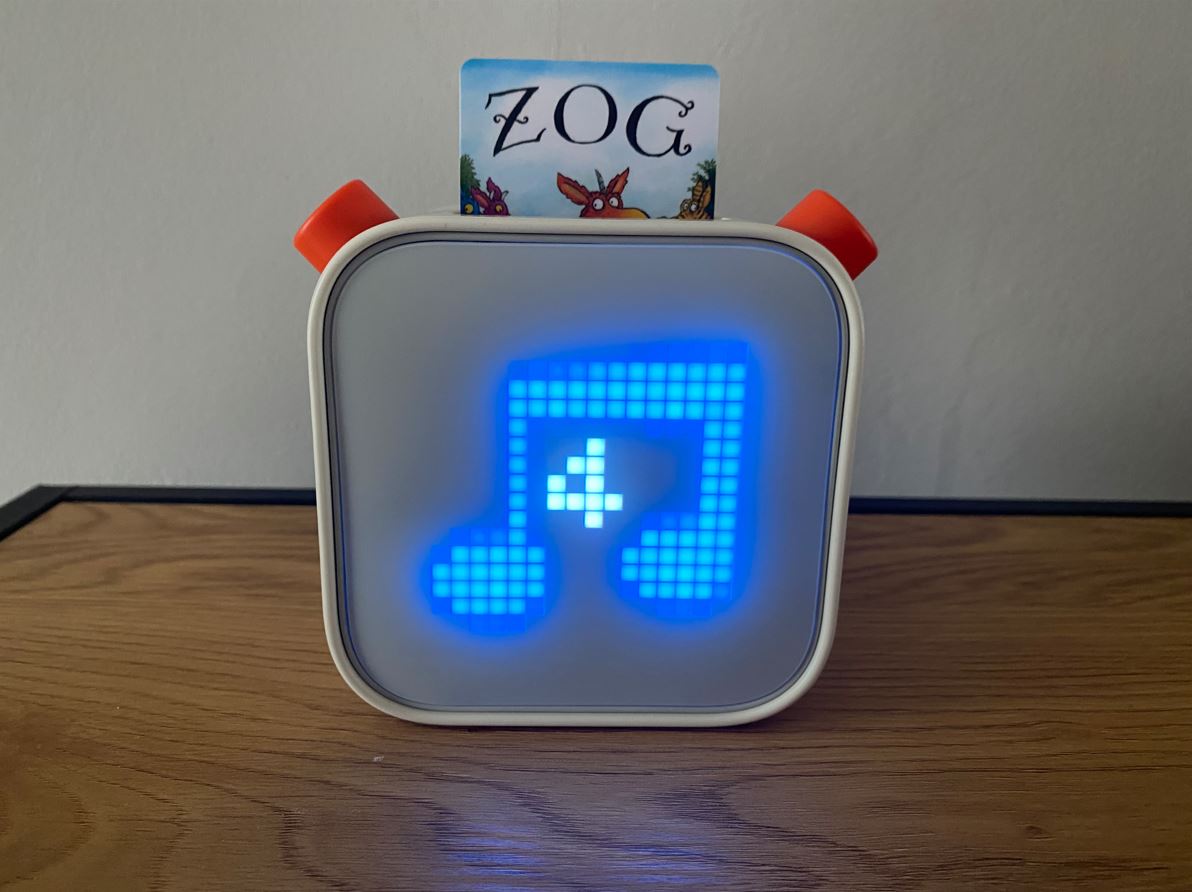
Once the cards are downloaded, (which happens automatically when they are played when you are connected to WiFi), you can listen to them anywhere without having to be connected to the internet.
You can also use blank or digital cards in order to create your own audio for your kiddos to enjoy.
What's the battery life like?
Once fully charged, you can get about 24 hours use out of the Yoto Player before it needs charging again. If a long battery life is particularly important to you, definitely opt for a Yoto - in comparison, the Toniebox battery lasts about seven hours.
How does it compare to a Toniebox?
Ultimately, the Yoto and Toniebox work in a very similar way, but they have a few key differences.
- Size: The Yoto is more compact than the Toniebox, which might be appealing if you want something a little more subtle.
- Cards versus characters. With the Yoto, stories are played via cards, which can be easier to store. The Toniebox uses Tonie audio characters that can look great on display.
- Lights: The Yoto has more lights than the Toniebox, thanks to its display, but you can place the Yoto display face down to activate the nightlight should you want it. The Toniebox doesn't have a nightlight, and any lights on it are completely covered when a Tonie character is places on top.
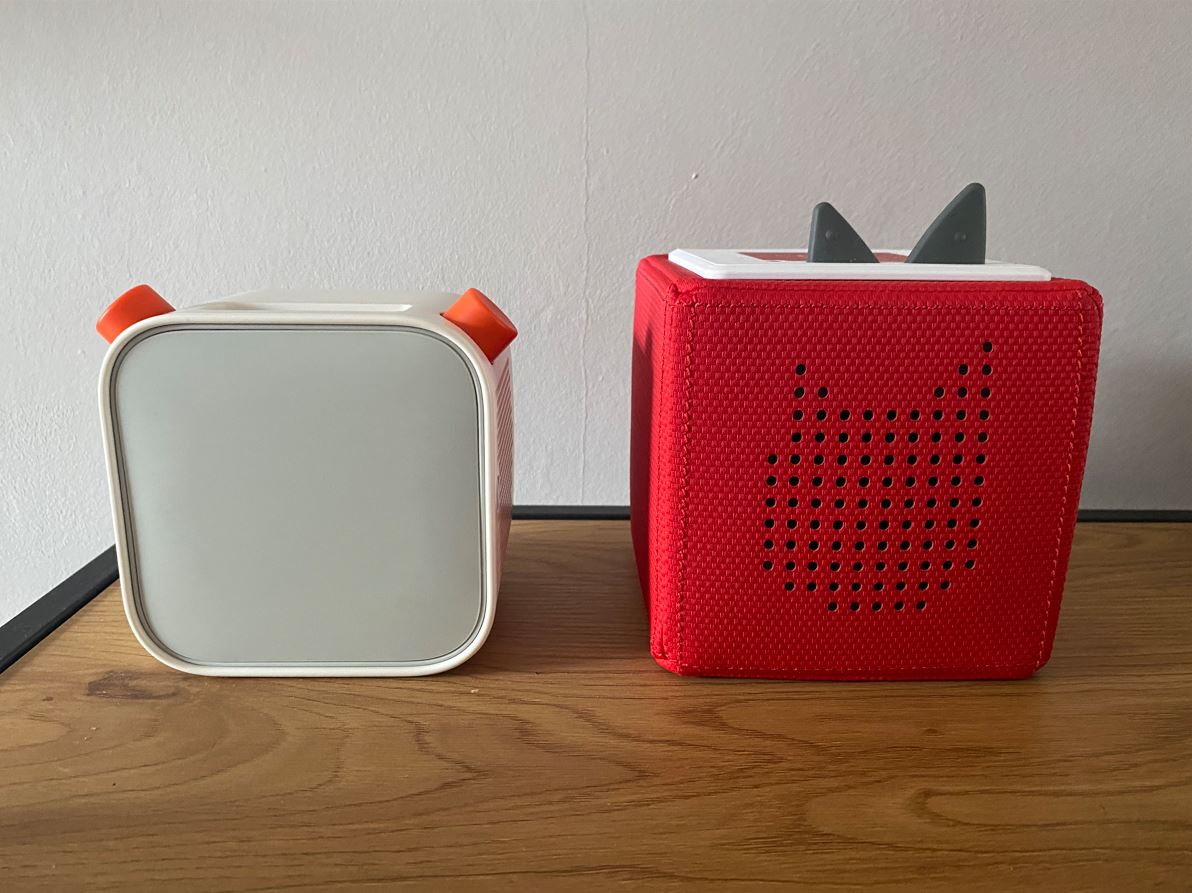
- Bonus features: The Yoto has a clock, nightlight and thermostat, and you can set alarms, which are really useful features - but if you don't need that, then the Toniebox may have all you need.
- Durability: To boost the durability of the Yoto player, you can buy an 'adventure jacket' to help protect it from bumps when you're on the move. Conversely, the Toniebox is covered in a layer of padding.
- Price: The Yoto has an RRP of £99.99, while the Toniebox has an RRP of £79.95. Yoto cards cost around £9.99, while Tonie characters cost around £14.99.
Is a Yoto Player worth the money?
If you want to jump aboard the audio player train, then a Yoto is definitely worth the money. It has a range of bonus features that set it apart from other players, so it does feel like you get good value for money. Its easily incorporated into a daily routine too, so cost per use is low too.
With the Yoto, there are also a broad range of extras you can buy - from the card case to the adventure jacket and wireless headphones. But this does add to the cost. However, if you buy via the Yoto website, you can add an activity jacket and wireless charging bad to your order, which works out more cost effective than purchasing them separately at a later date. You can also keep your eyes peeled for bundles, which include the player and a selection of cards, as you'll make a saving that way too.
If you want something more travel friendly, and at a cheaper price point, then you can always consider the Yoto Mini, which sells for £59.99.
Want to read more toy reviews to see what's worth spending your money on? Check out our Magic Mixies Pixlings review, or our Beast Lab Shark Beast Creator review.
GoodtoKnow Newsletter
Parenting advice, hot topics, best buys and family finance tips delivered straight to your inbox.
Sarah is GoodtoKnow’s Money Editor. After Sarah graduated from University of Wales, Aberystwyth, with a degree in English and Creative Writing, she entered the world of publishing in 2007, working as a writer and digital editor on a range of titles including Real Homes, Homebuilding & Renovating, The Money Edit and more. When not writing or editing, Sarah can be found hanging out with her rockstar dog, getting opinionated about a movie or learning British Sign Language.
-
 Baby name trends for 2025 leave us baffled (but secretly liking them - hi there Elio and Circe)
Baby name trends for 2025 leave us baffled (but secretly liking them - hi there Elio and Circe)The coming year could see some seriously cool and also incredibly wacky baby names doing the rounds, according to experts in the field.
By Lucy Wigley Published
-
 6 early signs your child could have dyslexia, according to experts
6 early signs your child could have dyslexia, according to expertsEducation experts have identified six early indicators of dyslexia, and strategies to support your child if they receive a diagnosis.
By Lucy Wigley Published
-
 What to say to your kids instead of 'good girl' and 'good boy'
What to say to your kids instead of 'good girl' and 'good boy'Although praising our children with words such as 'good boy' and 'good girl' come naturally to parents, research suggests this is outdated and needs to be reworded.
By Lucy Wigley Published
